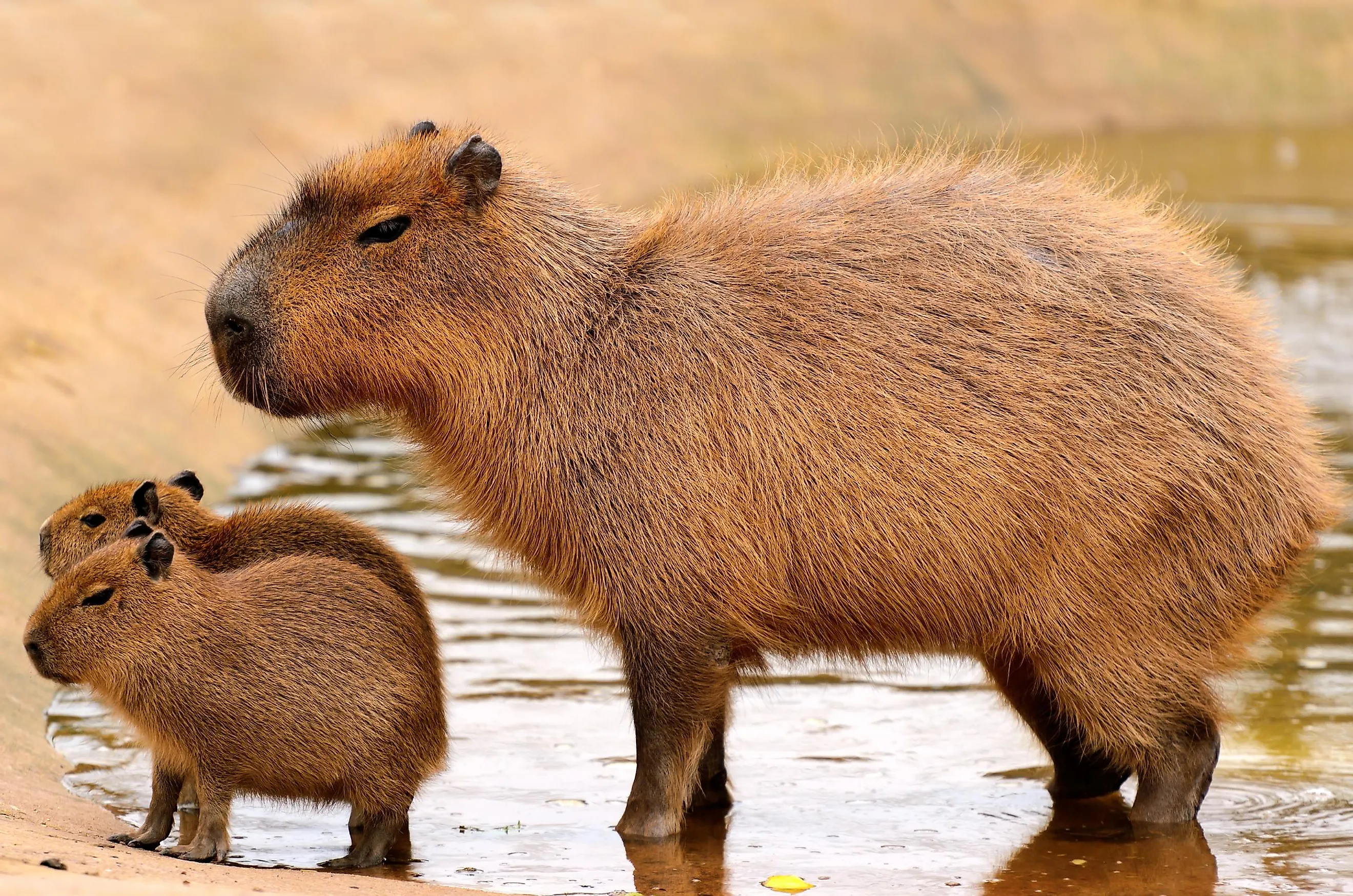
Capybara
The capybara, a previously little-known species, has become more and more popular in recent years and is now a full-blown internet sensation. This unique animal is particularly popular on platforms like Instagram and Tiktok, and memes and videos of these giant rodents seem to be everywhere. They are popular for their unique look, as well as their seemingly chill demeanor. But although they are growing in popularity, there is still a lot the general public needs to learn about capybaras, from what is a capybara really to where capybaras live, what they eat, and so much more.
What Is A Cabybara?
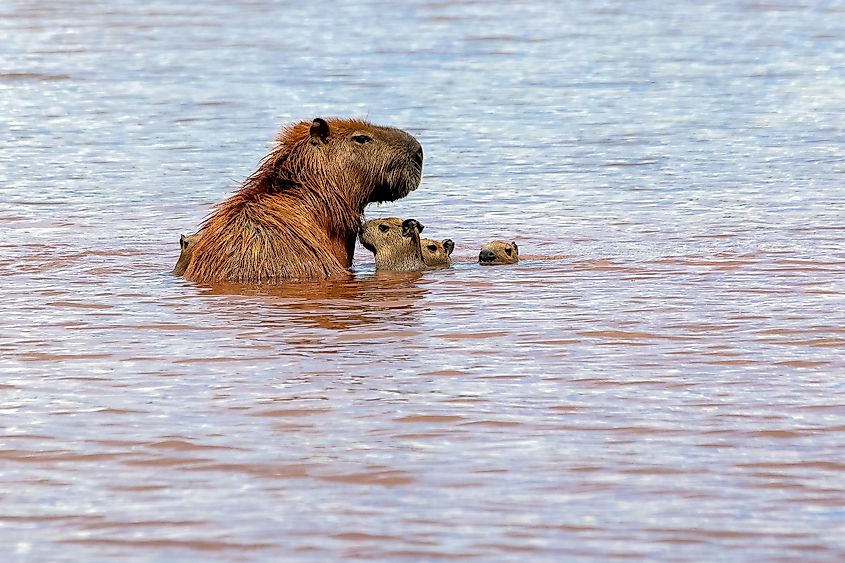
A capybara, scientific name Hydrochoerus hydrochaeris, is a plant-eating mammal and is, in fact, the largest rodent on earth. Sometimes described as a cross between a beaver and a pig, other times thought of as a giant guinea pig, this cute critter is certainly unique looking. Capybaras measure roughly 4.6 feet in length and stand approximately 2 feet tall. They are hefty creatures and can weigh around 77-143 pounds. The body of a capybara is similar to that of a pig but has webbed toes for paddling through the water as they are strong swimmers. They are covered in long bristly hair that is dark brown or reddish brown. Their faces and heads have small eyes, hairless ears, and little noses. They have a lifespan of between 4 and 8 years, but on average, they do not live past four as they often fall victim to other animals as prey.
Range And Habitat
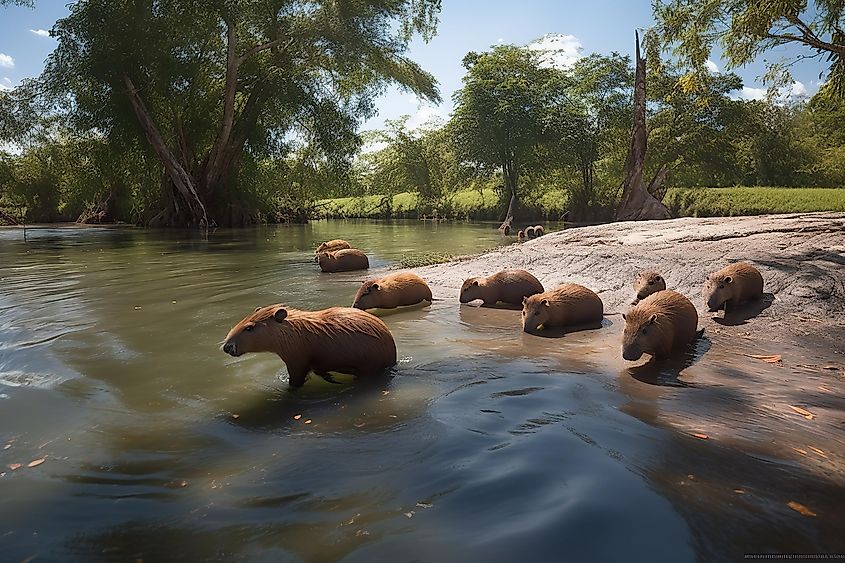
Capybaras live in South America, in the majority of the countries, including Panama, Brazil, Colombia, Venezuela, Argentina, French Guiana, Uruguay, Peru, and Paraguay. They prefer habitats with thick forests but are near water sources such as large rivers, lakes, swamps, or marshes, as they are semi-aquatic animals. The largest known population of capybara lives in the Brazilian Pantanal, the world’s largest wetland system.
Diet
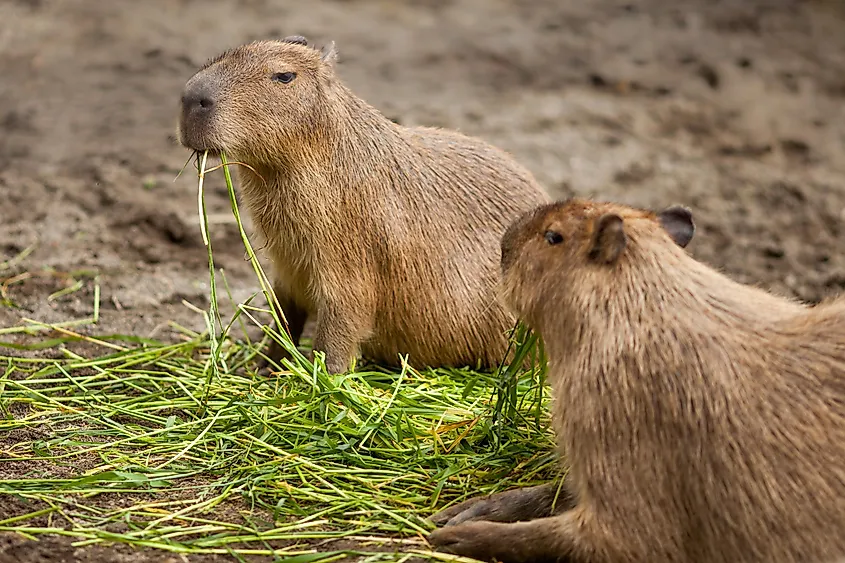
Capybaras are herbivores which means that they eat plants. They mostly eat different types of grass and aquatic plants though they sometimes eat tree bark and various fruits. Interestingly, capybara also eats their own excrement. Microbes in their feces help them to break down the cellulose in the grasses they eat, so they, in essence, digest their food twice.
Social Behavior And Reproduction
Capybaras are social animals. Though they can sometimes be found independently, they usually live in large groups ranging from 10 to 30 individuals. These smaller groups can also be found mixing with other groups to create larger herds, such as in the Pantanal. A group has a male leader, and the group communicates via smells, barks, chirps, squeals, and purrs in a similar way to guinea pigs.
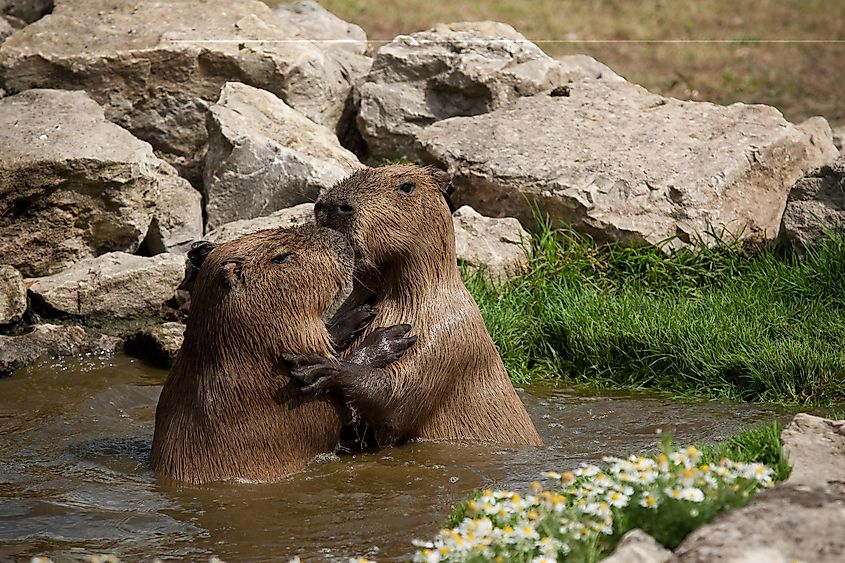
Because they live in warm climates, capybara spends a lot of time lounging in the water, especially in the middle of the day when it is hottest. They can survive for up to five minutes underwater and avoid predators by hiding beneath the water’s surface. In fact, they can even sleep underwater by keeping their nose above the surface to allow them to breathe.
Capybaras don’t sleep very much, though, and tend to doze throughout the hotter parts of the day. They will adjust their sleep habits seasonally to avoid predators, sometimes sleeping at night and sometimes sleeping mostly during the day.
A capybara is considered to have reached maturity at 18 months old and is ready to mate. Depending on where the capybaras live, they may mate once a year or throughout the year. The gestation period of a capybara is between 130 and 150 days, and the litter size is usually four babies. Young capybaras will drink the milk of any female within their group, and the young are shared between them. After only a week, the young can start eating grass but will not be fully weaned until they are 16 weeks old.
Importance Of The Capybara Within Its Ecosystem
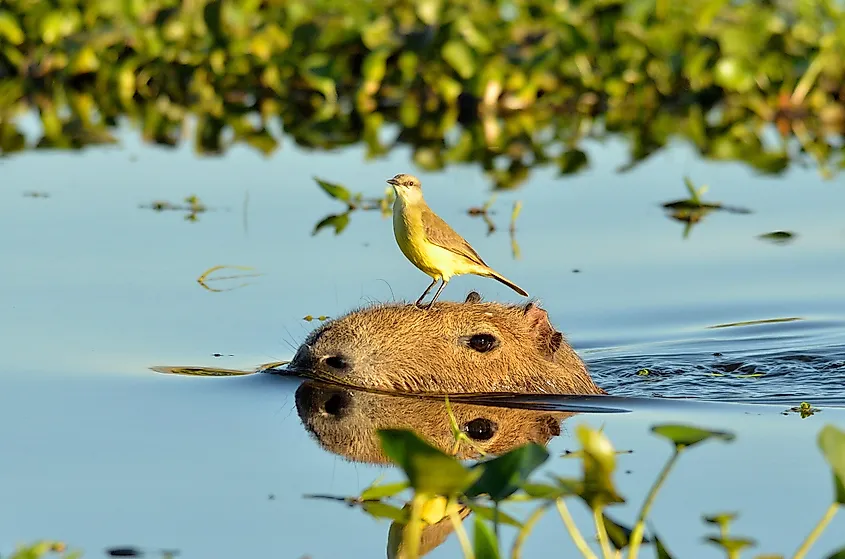
Capybaras have a few roles within their ecosystem. Firstly, they are an important food source for a number of predators. Natural predators of the capybara include caimans, jaguars, anacondas, and pumas. Baby capybaras are more vulnerable and can fall prey to eagles and ocelots. Other animals interact with the capybara more positively. Birds and even monkeys have been known to ride a capybara’s back both on land and through the water. Capybara also helps keep plant life in check and ecosystems balanced. They allow water levels to stay healthy by eating aquatic plants. They also eat grass and plants around the wetlands, which keeps plant populations in check, and everything in a balanced state. Their feces also help spread seed, which keeps soil healthy and spreads plants across their habitat.
Threats To The Capybara
Aside from natural predators like jaguars and caiman, humans threaten capybaras. They are actively hunted for both their skins for leather, as well as for their meat. They have even been killed so that they do not compete with other livestock for grass and food. Aside from hunting, deforestation and habitat loss is another major factor. Despite these threats, capybaras are not listed as of concern on the IUCN Red List, and their ability to populate and mate quickly helps keep their overall population strong.











